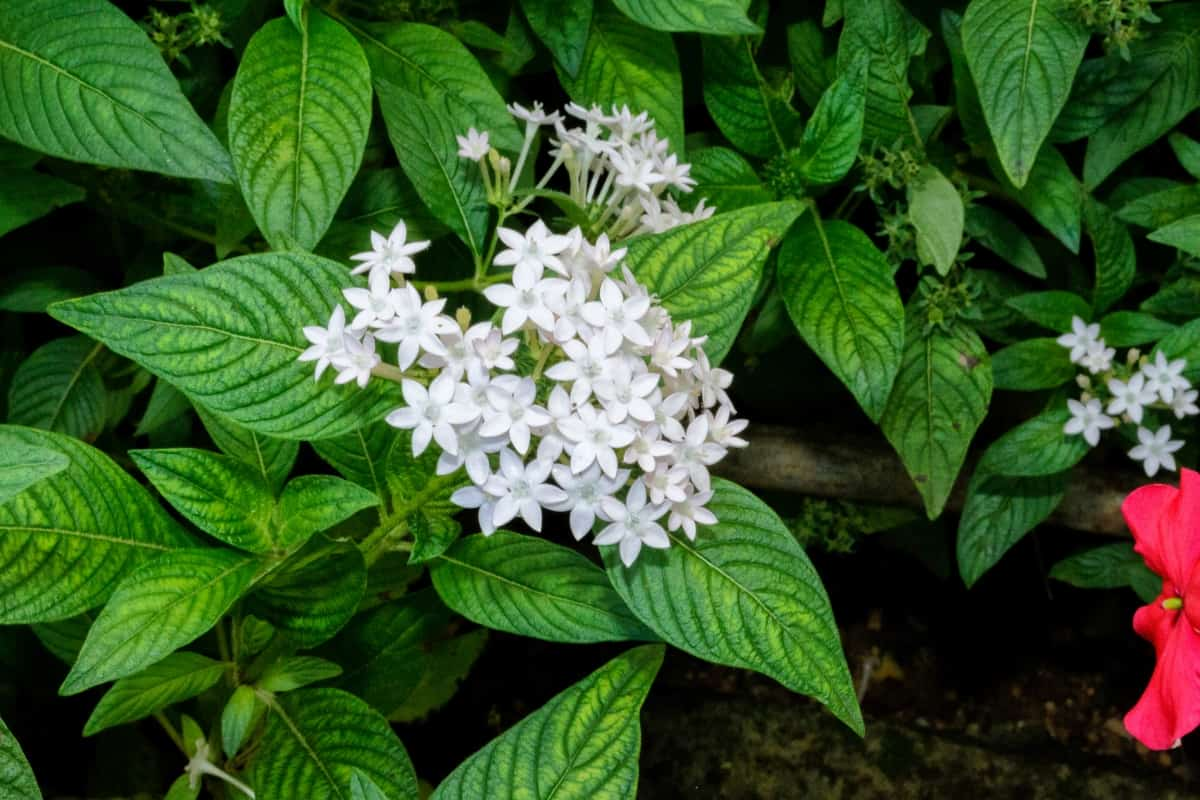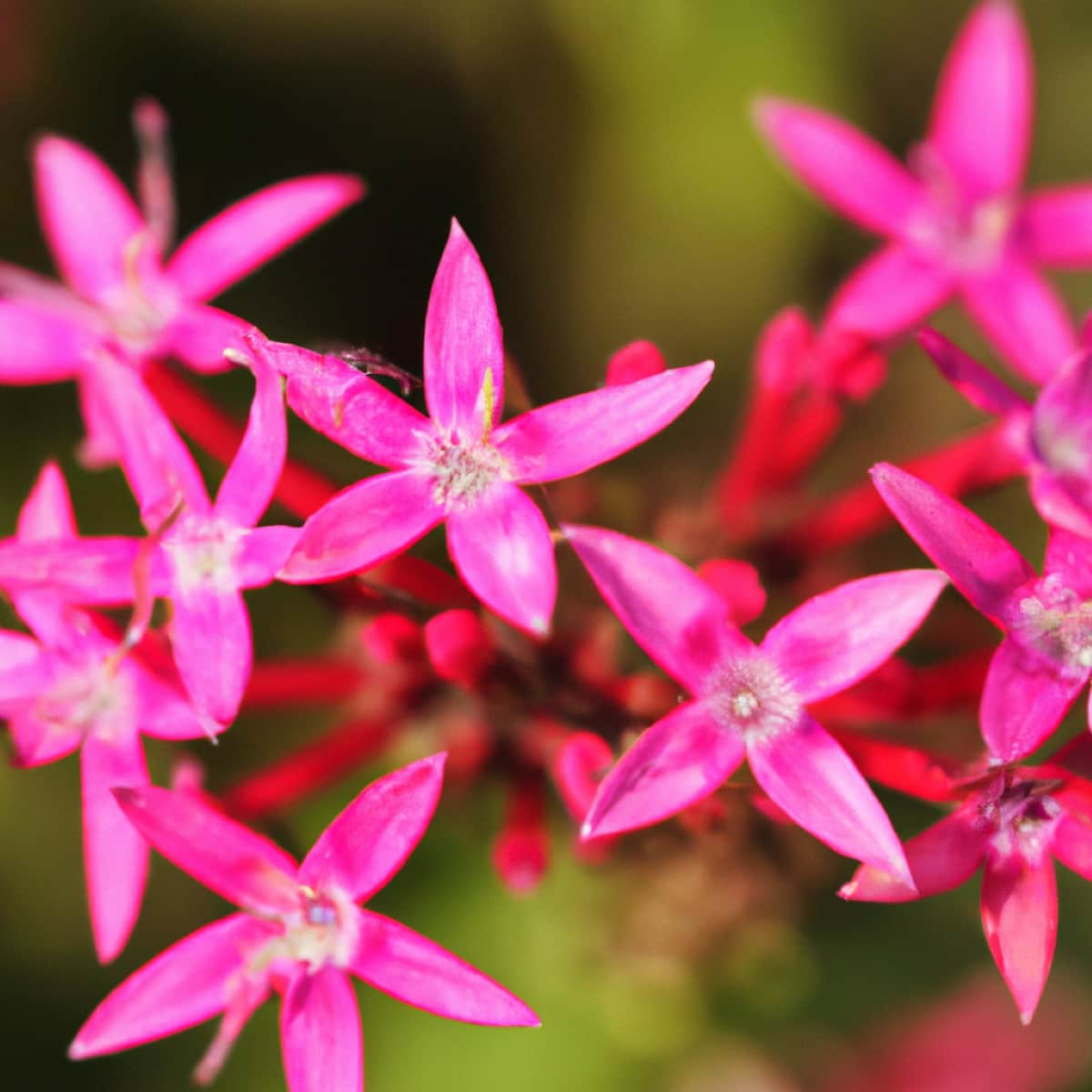Pentas is a beautiful flowering plant that produces clusters of star-shaped flowers in pink, red, and white shades. It’s popular for gardeners who want to attract butterflies and hummingbirds. If you plan to grow Pentas, here are some planting instructions to help you get the best blooms.

How to Grow and Care for Pentas
Best Soil for Pentas Plant Growth
The best soil for Penta’s plant growth is well-draining soil rich in organic matter. The soil should have a pH level between 6.0 to 7.5, which is slightly acidic to neutral. This soil type allows for proper drainage, essential for controlling root rot and other fungal diseases. To prepare the soil for planting Pentas, mix in a good quality organic compost or well-rotted manure to improve the soil’s fertility and texture. This will give the plant the necessary nutrients to grow and thrive.
Sunlight Requirements for Pentas Flowers
Pentas flowers are a popular choice for gardeners. However, to grow healthy and produce their beautiful blooms, Pentas require specific sunlight requirements. Flower beds and container gardens receiving full sun are ideal for growing Pentas. While they can withstand partial shade, they will become leggy if they do not get at least three hours of bright light daily.
Planting Pentas in containers is important to ensure the container is located in an area that receives adequate sunlight. Placing the container on a patio or balcony with morning sun and some shade during the afternoon is a great option for container gardening.
Watering Schedule for Pentas Plants
Pentas plants should be watered weekly during spring, summer, and fall. During winter, reduce the frequency to once every two weeks. However, it is important to note that the watering frequency may vary depending on the climate and location. When watering your Pentas plants, give them a good soak. Water the plants until the water starts draining out of the pot’s bottom. This promotes that the entire root system is well-hydrated.
Pruning Tips for Healthy Pentas Growth
The best time to prune your Pentas plant is during the spring season. This will encourage healthy growth and ensure that your plant remains healthy. The overall habit of these plants is neat and compact. If plants get too long and woody, cut them back the plants will rejuvenate themselves.
You can also prevent overgrowth by giving the plants a pinch at the tips when young to encourage low branching. Keep plants deadheaded by removing spent blooms to encourage the constant reproduction of flowers. Remove any diseased or damaged foliage to prevent the spreading of disease and pests. Cut the foliage back to just above the healthy part of the plant.
Fertilizing Guidelines for Pentas Flowers
Pentas should be fertilized once a month with an all-purpose flower fertilizer during periods of active growth. The best fertilizers for plants are those that release nutrients gradually throughout the growing season. Blossoms will form when there is a greater phosphorus content in the soil, while leaves will grow when there is a greater nitrogen content.
- Avoid over-fertilization, which can lead to excessive vegetative growth and reduced flowering.
- Water the plants thoroughly after fertilizing to help distribute the nutrients evenly.
- Monitor the plants for nutrient deficiency symptoms, such as yellowing leaves or stunted growth, and adjust the fertilizer application as needed.
In case you missed it: How to Grow and Care for Gladiolus: Planting Instructions for Better Blooms

Pest Control for Pentas Plants
The penta flower can also be attacked by thrips, aphids, and white flies. Insecticidal soap should be sprayed as soon as you notice these pests. To kill newly hatching offspring, repeat spraying every few days. When the climate is hot and dry, spider mites also love Pentas. By misting the foliage in the morning, you can prevent spider mite damage. Spray insecticidal soap on spider mites to kill them.
Transplanting Pentas: Step-By-Step Guide
- Choose the Right Time: Choosing the right time to transplant your Pentas is essential. The best time to do this is early spring or late fall. During these times, the weather is mild, reducing the plants’ stress.
- Prepare the New Site: Before transplanting your Pentas, you must prepare the new site. Consider a spot in your garden with plenty of sunlight and well-draining soil. Loosen the soil about 12 inches deep and add some compost or other organic matter to improve the soil’s quality.
- Water the Pentas: Water your Pentas generously a day before transplanting. This will ensure the roots are well hydrated and help reduce transplant shock.
- Dig up the Pentas: Dig up the Pentas carefully, digging around the roots to avoid damage. Loosen the soil around the plant base, then gently lift the plant using a garden fork or shovel.
- Transplant the Pentas: Place the Pentas in the new site, ensuring the root ball is at the same level as the soil surface. Backfill the hole with soil after placing the plant in it, and gently firm it around the plant.
- Water the Pentas: Water the Pentas immediately after transplanting to help settle the soil and reduce transplant shock. Continue to water the plant to keep the soil moist but not waterlogged.
- Mulch the Pentas: Mulching is an essential step in transplanting Pentas. It retains moisture, suppresses weeds, and regulates soil temperature. Add a mulch around the plant’s base, ensuring not to cover the stem.
Common Diseases Affecting Pentas and Their Remedies
- Avoid root rot diseases by growing Pentas in raised beds or containers if the soil is heavy clay. Don’t wet the leaves when watering; use drip irrigation to avoid foliar diseases.
- Powdery mildew appears as a white or grayish powder on the plant’s surface, causing the leaves to turn yellow and curl. You can use a fungicide spray or a mixture of baking soda and water to remedy this disease.
- Bacterial wilt is a disease caused by bacteria that can cause wilted leaves, yellowing, and stunted growth. The infected Pentas plant parts should be removed and destroyed to prevent spreading to other plants.
Propagating Pentas from Cuttings
- Select Pentas plants that are healthy and disease-free. The best time to take cuttings is during the spring or summer months.
- Use clean and sharp shears or scissors to take 4-6-inch cuttings from the tips of the Pentas plant. Ensure each cutting should have at least one set of leaves and a few nodes.
- Remove the lower leaves from each cutting, leaving only one or two sets of leaves at the top. Dip the cut end of each cutting in the rooting hormone.
- Plant each cutting in a container filled with a well-draining potting mix. Water the cuttings thoroughly and cover the pot with a clear plastic bag to generate a mini greenhouse effect.
- Keep the cuttings in a warm, bright location out of direct sunlight. Water the cuttings regularly, but do not overwater. After a few weeks, new growth should appear, indicating that the cuttings have rooted.
- Once the cuttings are rooted, they can be transplanted into larger containers or the garden.
Winter Care for Pentas Plants
Pentas plants are sensitive to cold temperatures. If the temperature goes below 10°C, it can cause damage to the plant. Therefore, keeping your Pentas plant in a warm location during the winter is important. Do not fertilize your Pentas plant during the winter months. Fertilizer promotes growth, which is not necessary during the dormant winter months.
In case you missed it: How to Grow and Care for Dianthus: Planting Instructions for Beginners

Pentas are best overwintered in containers, but you can transplant them into pots if they are in the garden. If you live in a cold climate, bring the plants inside before the first frost. Make sure they are placed in a warm room with a sunny window. Pentas overwinter best by taking cuttings and rooting them, which is a common method of overwintering.
Conclusion
Following these planting instructions will help ensure that your Pentas plant produces the best blooms possible. With a little care and attention, your Pentas will thrive and display beautiful colorful flowers.
- Feed Your Flock for Less: Top 10 Tips to Save on Chicken Feed
- Ultimate Guide to Ossabaw Island Hog: Breeding, Raising, Diet, and Care
- Hatching Answers: The Top 10 Reasons Your Chickens Aren’t Laying Eggs
- Eggs and Economics: Breaking Down the Cost of Raising Backyard Chickens
- Defend Your Greens: Proven Methods to Keep Iguanas Out of Your Garden
- Ultimate Guide to Cinnamon Queen Chicken: A Comprehensive Guide for Beginners
- Ultimate Guide to California Tan Chicken: Breeding, Raising, Diet, Egg-Production and Care
- Ultimate Guide to Marsh Daisy Chicken: Breeding, Raising, Diet, and Care
- 10 Types of Chicken Farming Businesses You Can Start for Profits